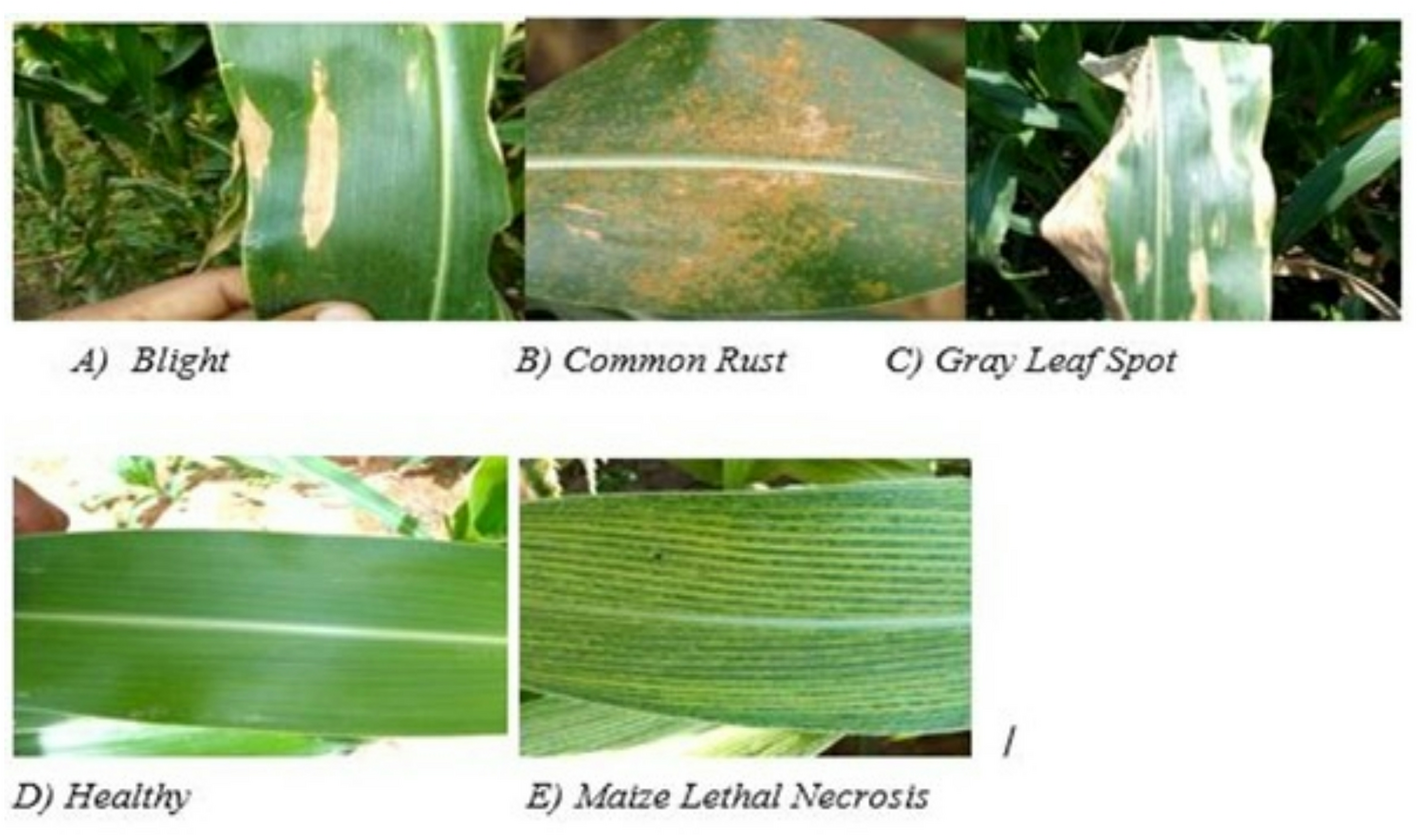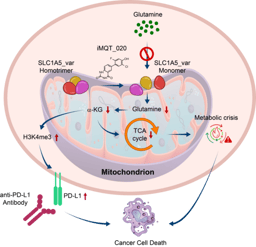A statistically validated stacking ensemble of CNNs and vision transformer for robust maize disease classification

Inspiration
We note that global food security is under increasing pressure from crop diseases. In particular, maize is a staple crop in many countries including Ethiopia, where yield losses due to foliar diseases such as Turcicum Leaf Blight, Common Rust, Gray Leaf Spot and Maize Lethal Necrosis are a serious threat. Traditional visual inspection by farmers or extension agents is labor intensive, subjective and prone to misdiagnosis. Moreover, deep learning and transformer based models have shown promise in plant disease diagnosis via images, but there remain gaps. Thus, we tried to build a robust disease classification model for maize leaves that can:
(1) Apply multiple architectures (CNNs + Vision Transformer) in a heterogeneous stacking ensemble
(2) Provides statistical validation (K-fold, paired t-test) to ensure performance gains are real
(3) Takes into account real world field data (rather than only curated lab images)
(4) Assesses computational cost , so that the solution can be realistically applied (e.g., for Ethiopian farming conditions).
Actions
First, we collected a large dataset of maize‐leaf images: 15,995 images, combining in field smartphone photos from Ethiopia and a public Kaggle dataset. Then, we pre processed images (resizing to 224×224, normalization, median filtering, K-means segmentation to isolate leaf regions) to reduce noise and background variation. Next, we selected several pre trained CNN architectures (DenseNet201, InceptionV3, NASNetMobile, VGG19) and a Vision Transformer (ViT) to act as base learners. Additionally, we built a stacking ensemble: all base models extract features, then a meta learner (a fully connected network) concatenates the feature vectors and learns how to best combine them. We ran stratified five fold cross validation on the training/validation split, and held out an independent test set (~15% of data). We also applied a paired t-test comparing the ensemble vs the best single model to check statistical significance (p < 0.05). Finally, we analyzed computational cost (training time, inference speed) and deployment scenarios.
Outcomes
First, on the hold-out test set, the stacking ensemble achieved 99.15% accuracy. Second, in the five-fold cross‐validation, the mean validation accuracy was 99.13% with a very low standard deviation (~±0.14), indicating high stability. Third, the improvement over the best single model (DenseNet201) was statistically significant (paired t-test, p < 0.05). Fourth, although high-performance, the ensemble comes with the cost of higher inference time (~5× slower than a single DenseNet201) and heavier computational resources (training on a Tesla P100 GPU took ~6.5 h). Fifth, we emphasize that this makes the solution more suited for deployment .
As a result, the heterogeneous stacking ensemble combining multiple CNNs and a Vision Transformer is, according to the researchers, novel in the maize‐leaf disease domain. That means, the rigorous methodological approach: stratified K-fold, paired t-test, comparative benchmarking of heavy vs light models and the field collected data from Ethiopian farms adds real-world variation (lighting, backgrounds, smartphone camera), improving generalizability.
The research dataset is available at: https://doi.org/10.57760/sciencedb.28532
Influencer
For practitioners (agronomists, extension agents, farmers) this model offers a high‐accuracy tool for diagnosing maize leaf diseases in real‐world settings, potentially leading to earlier intervention, reducing misdiagnosis, saving yield and input costs.
Because the research was done in Ethiopia, it is particularly relevant for sub-Saharan Africa and smallholder farming contexts, where smartphone penetration is growing and crop disease diagnosis remains a challenge.
From a research perspective, the work sets a new baseline (99.15% accuracy) for maize-leaf disease classification with field images, and outlines a methodological standard that others can follow or build upon.
Insights
It’s very encouraging to see a research addressing a locally relevant, globally important problem (maize disease) with modern AI methods. The fact that we collected field images makes the work more meaningful and practicable for African agriculture.
The emphasis on statistical validation (paired t-tests) is a welcome step: many papers report high accuracy but don’t show that improvement is statistically significant nor that results are stable across folds. That builds trust.
One thing to watch is how well the model generalizes when the maize plant variety, disease presentation, background vary more widely than the dataset. We note this . For a farmer, tools that “fail” outside their training domain can still harm trust. What matters even more is real‐world usability. We deliver a prototype which is a good start.
Follow the Topic
-
Discover Artificial Intelligence

This is a transdisciplinary, international journal that publishes papers on all aspects of the theory, the methodology and the applications of artificial intelligence (AI).
Related Collections
With Collections, you can get published faster and increase your visibility.
AI in Public Health and Epidemiology
With the growing availability of health-related big data, AI offers unique opportunities to enhance disease surveillance, predict outbreaks, optimize healthcare resources, and evaluate public health policies. By applying machine/deep learning, natural language processing, and advanced data analytics, researchers can identify patterns and trends in epidemiological data, improve early warning systems for infectious diseases, and provide actionable insights for policymakers.
This Collection seeks to gather innovative AI research and applications from multiple fields, addressing critical challenges in public health and epidemiology. Researchers, practitioners, and policymakers are invited to contribute their work and insights, bridging the gap between technological innovation and public health impact.
Key topics of interest include but are not limited to:
- Data-driven mathematical modelling for the study of disease dynamics.
- AI-driven analysis of social determinants of health.
- Decision support and expert systems in public health.
- Integration and analysis of multimodal data for health insights.
- Use of generative AI and large language models for advancing health services.
- Optimization strategies for vaccine distribution and other healthcare resources.
- Analysis, monitoring, and evaluation of COVID-19 during the post-pandemic phase.
- Ethical AI applications in public health and the development of explainable models.
- Community-based data integration to promote equity-focused public health solutions.
This Collection supports and amplifies research related to SDG 9 and SDG 10.
Keywords: Health-related big data, disease surveillance, epidemic modeling, machine learning, epidemiological data, predictive models, AI-driven analysis, public health policies, large language models, generative AI.
Publishing Model: Open Access
Deadline: Apr 30, 2026
Collaborative Artificial Intelligence
Collaborative AI aims at helping humans to achieve tasks adaptively, flexibly, and securely, in ethical and transparent ways. Collaborative systems must be able to align their behavior to human objectives, values, practices and needs according to pragmatic constraints. Therefore, we need to provide agents with abilities to recognize and disentangle modalities of human behavior to achieve goals, to collaborate with humans in defining the goals and in the achievement of goals w.r.t. human preferences, objectives, and practices, to adapt their role according to shifts of human behavior, and to be transparent, providing explanations with respect to pragmatic constraints (time constraints, humans’ cognitive lead, etc.).
Topics of interest are as follows:
- Learning collaborative behavior from demonstrations
- Learning to disentangle modalities of behavior w.r.t. contextual features, human preferences, and values
- Learning to collaboratively adapt w.r.t. contextual features, human preferences, values and needs
- Knowledge representation and reasoning for adaptive collaboration
- Collaborative AI in the intersection of automated reasoning and machine learning
- Validation frameworks for collaborative agents
- Transparency and explainability in the context of collaborative decision making
- Collaborative AI in multi-agent systems
- Collaborative AI in real-world settings with safety and/or ethical concerns
Keywords: Collaborative agents, inverse reinforcement learning, deep reinforcement learning, adversarial inverse learning, automated reasoning, knowledge representation, transparency, explainability, collaborative adaptation, real-world settings.
Publishing Model: Open Access
Deadline: Dec 31, 2025


Please sign in or register for FREE
If you are a registered user on Research Communities by Springer Nature, please sign in